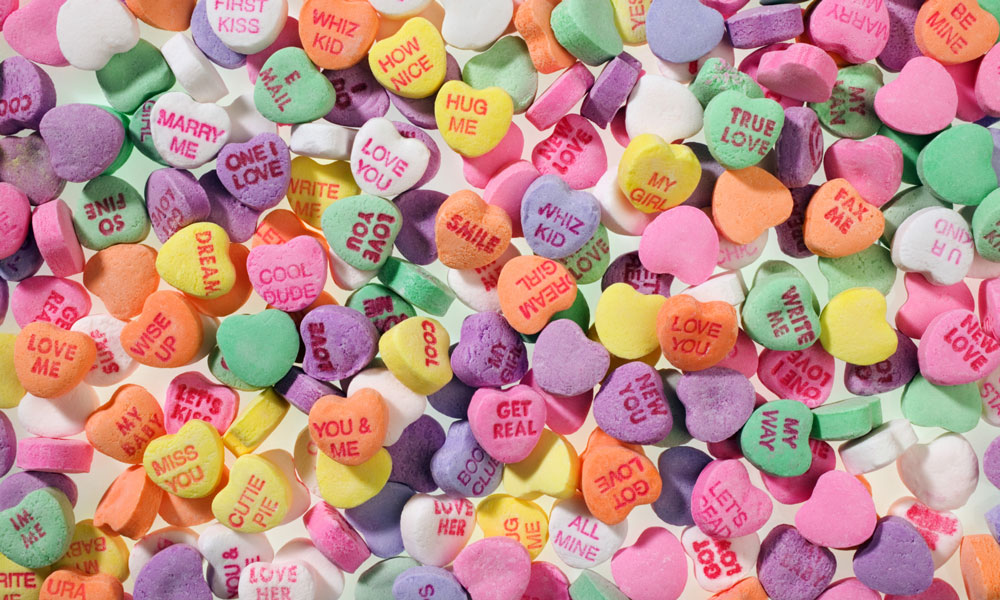
Valentine’s Day, According to Associations
Associations representing everything from candy and flowers, to greeting cards and jewelry, are weighing in on what to expect this Valentine’s Day and offering tips on how to treat either a special someone or yourself.
Diamonds and roses and chocolate, oh my! Valentine’s Day—the love-it or loathe-it holiday—is here. About 55 percent of American consumers plan to celebrate this Sunday, according to the National Retail Federation’s Valentine’s Day Consumer Spending Survey, spending an average of $146.84 on gifts, up from $142.31 last year.
Fifty-percent of consumers surveyed by NRF said they planned to buy candy, which is fitting given that a survey by the National Confectioners Association found 94 percent of Americans reported they wanted to receive a gift of candy or chocolate. Even if one is single this Valentine’s Day, NCA found 43 percent of Americans, predominantly women and millennials under age 30, will buy their own chocolate.
“Chocolate and other sweets have long been associated with celebrations,” NCA President and CEO John Downs said. “Even a small taste of your favorite candy can transport you to another place, and conjure up happy memories.”
Candy sales are anticipated to reach upwards of $1.1 billion this Valentine’s Day, NCA estimates. The NRF is slightly more optimistic, anticipating $1.7 billion in candy sales.
However, not all Americans are looking to spend their Valentine’s Day with a box of chocolate. For those couples opting for a night out, American Psychological Association relationship expert Diana Kirschner, PhD, recommends they do something different. “Try rock-climbing indoors, cross-country skiing, a comedy club, or anything to get the blood moving, and the dopamine rising,” she said.
For those who are single, Kirschner recommends making Valentine’s Day memorable by hosting a dinner or party with friends or going to a movie, comedy show, or play. “In short, put your attention on the loving friends you do have,” she said. “Have fun and enjoy the love you share with them.”
But back to those gifts. About 48 percent of Americans plan to send a greeting card this year, which will please the 89 percent of Americans who reported they would like to receive a card, NRF said. Valentine’s Day is the second-most-popular time to send a greeting card, behind Christmas, according to the Greeting Card Association. About 145 million card units are sold each Valentine’s Day, not including classroom valentines.
And you can never go wrong with flowers, especially since NRF found that 71 percent of Americans would like to receive them. The most popular flower—roses—account for 52 percent of Valentine’s Day orders, according to the Society of American Florists. Almost 70 percent of all roses purchased are red, followed by pink and white. An average cost for a dozen roses on Valentine’s Day is $84 compared to $66 for a non-holiday.
For those looking to gift their love with a luxury item, the NRF survey found that 67 percent of Americans would like to receive jewelry. For women, diamonds are a timeless option, according to Jewelers of America, while watches are a great option for men, the group said in its Valentine gift guide. One trend jewelers are seeing in 2016 is an increase in jewelry with pink and red gemstones.
Whether you decide to treat yourself or someone else, NRF President and CEO Matthew Shay said Valentine’s Day spending could give the economy a positive boost.
“Low gas prices and guaranteed promotions from retailers large and small should help consumers as they look for the perfect gift for their friends and family,” Shay said. “We’re optimistic consumers are in a good place when it comes to spending on discretionary items like gifts.”
(iStock/Thinkstock)





Comments